7 endangered animals in India
Know fact about Gharial
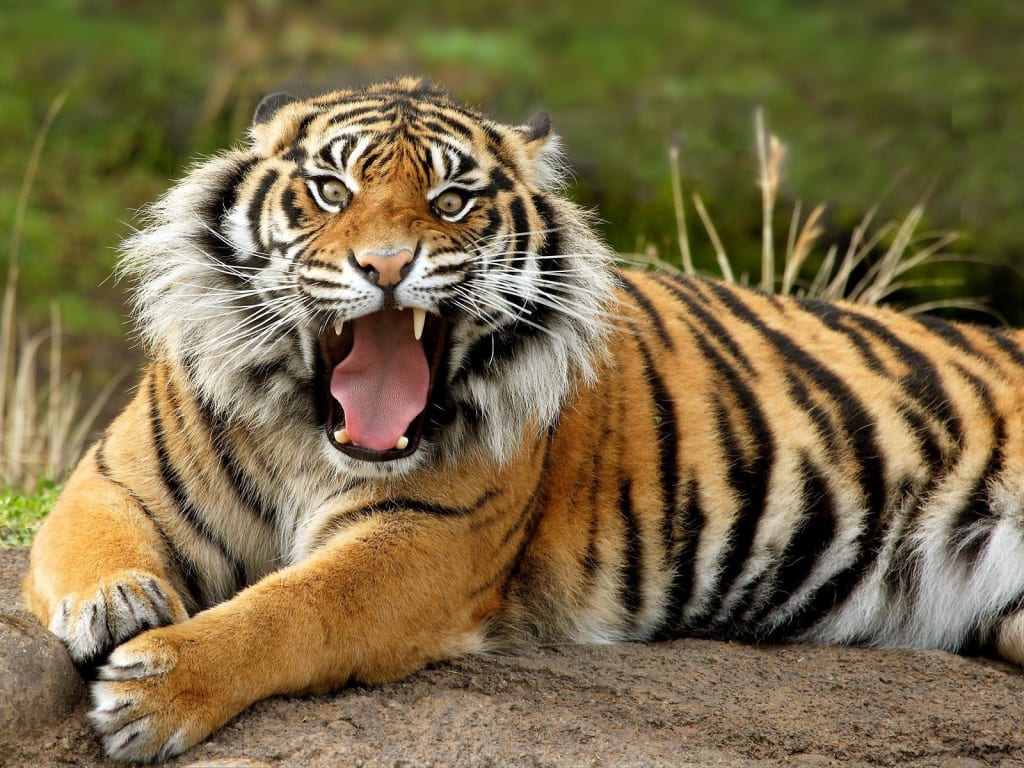
1., Bengal tiger:
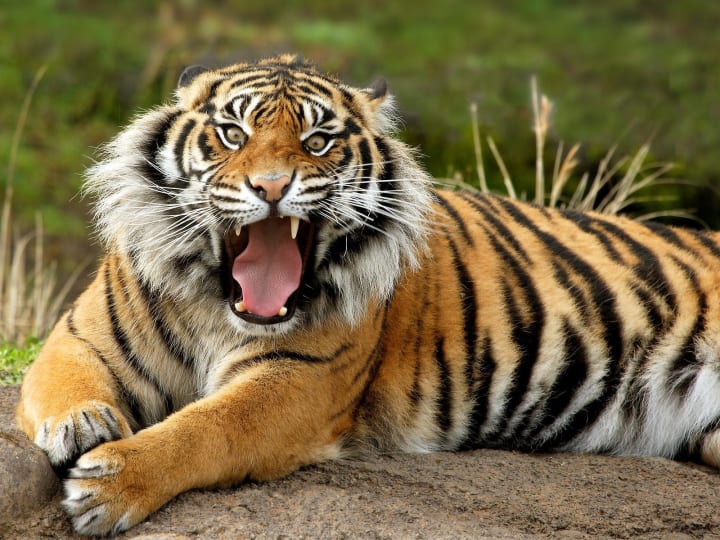
The Bengal tiger, also known as the Indian tiger, is a subspecies of tiger that is found mainly in India, but also in Bangladesh, Nepal, Bhutan, and Myanmar. It is the most numerous tiger subspecies, with an estimated population of 2,500 individuals in the wild. However, the population has declined significantly in recent years due to various threats, such as habitat loss, poaching, and human-tiger conflict.
Physical Characteristics:
Bengal tigers are the largest of the Asian big cats, with males weighing up to 600 pounds and females weighing up to 400 pounds. They have a distinctive orange coat with black stripes, and the stripes are unique to each individual, like human fingerprints. Their belly, chest, and inner parts of the limbs are white in color, with a few black stripes. Their long and powerful tail is used for balance and communication.
Behavior:
Bengal tigers are solitary animals that prefer to hunt alone. They are apex predators, and their diet consists mainly of deer, wild boar, and other ungulates. They are also known to occasionally prey on smaller animals such as monkeys, birds, and reptiles. Tigers are ambush predators and have a powerful bite force that can crush the skull of their prey.
Conservation Status:
The Bengal tiger is currently listed as an endangered species by the International Union for Conservation of Nature (IUCN). The major threats to their survival are habitat loss due to deforestation, poaching for their skins, bones, and other body parts, and human-tiger conflict. India has taken several measures to conserve the Bengal tiger, such as creating protected areas like national parks and wildlife sanctuaries, strengthening anti-poaching measures, and providing compensation to villagers who have lost their livestock or family members to tiger attacks.
2., Indian elephant:
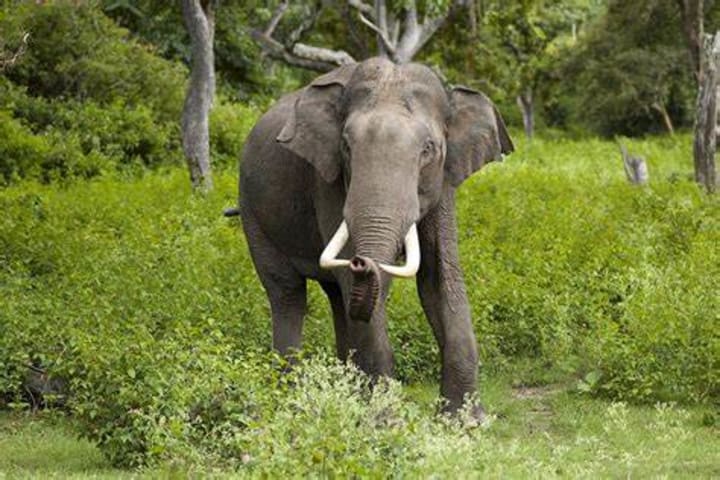
The Indian elephant, also known as the Asian elephant, is one of the three extant species of elephants and is native to the Indian subcontinent. They are considered to be an important cultural and ecological icon in India and are highly revered in Indian mythology and religion.
Physical Characteristics:
Indian elephants are the largest land animals in Asia and the second-largest in the world, with males weighing up to 5,500 kg (12,000 lb) and females up to 3,000 kg (6,600 lb). They have a thick grey skin that is sparsely covered with hair and long, curved tusks that are used for defense and foraging. Both males and females have tusks, but males tend to have larger tusks than females. They also have a long, prehensile trunk that is used for various tasks such as eating, drinking, and communication.
Behavior:
Indian elephants are social animals and live in herds led by a matriarchal female. The herds are made up of females and their offspring, while males tend to live alone or in small bachelor groups. They are herbivores and feed on a variety of plants, including grasses, fruits, and leaves. They also require large amounts of water and are often found near rivers and other water bodies.
Conservation Status:
Indian elephants are listed as endangered by the International Union for Conservation of Nature (IUCN). Their populations have declined significantly in recent years due to habitat loss and fragmentation, poaching for their ivory, and human-elephant conflict. In India, where the majority of the world's wild elephants are found, various measures have been taken to conserve these animals. Protected areas such as national parks and wildlife sanctuaries have been established, and anti-poaching measures have been strengthened. The Indian government has also implemented schemes to mitigate human-elephant conflict, such as providing compensation to farmers whose crops are damaged by elephants and creating elephant corridors to facilitate their movement between habitats.
3., Snow leopard:
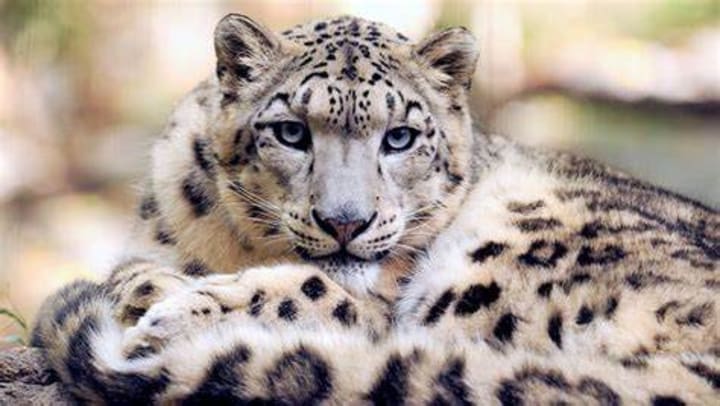
The snow leopard, also known as the ounce, is a large cat native to the mountainous regions of Central and South Asia. It is listed as a vulnerable species by the International Union for Conservation of Nature (IUCN), with an estimated population of only 4,000 to 6,500 individuals remaining in the wild.
Physical Characteristics:
Snow leopards are well adapted to living in the cold and rugged terrain of the mountains. They have a thick, long, and soft coat of fur that ranges in color from light gray to pale yellow with black spots. The fur on their underbelly is white, and they have a bushy tail that is used for balance and warmth. They are relatively small for a big cat, weighing between 60 to 120 pounds, with males being larger than females.
Behavior:
Snow leopards are solitary animals that prefer to hunt at night. Their diet mainly consists of wild sheep and goats, but they also prey on smaller mammals such as marmots, pikas, and hares. They are excellent climbers and can leap up to 50 feet in a single bound. They are also able to survive in extreme temperatures, withstanding temperatures as low as -40°C.
Conservation Status:
The snow leopard is listed as a vulnerable species by the IUCN, with populations declining mainly due to habitat loss, poaching, and human-wildlife conflict. Snow leopards are poached for their fur, bones, and other body parts, which are in demand in traditional medicine and the illegal wildlife trade. The loss of their natural prey due to overhunting has led them to prey on domestic livestock, which has resulted in retaliatory killing by herders.
To conserve the snow leopard, various measures have been taken, including establishing protected areas such as national parks and wildlife reserves, strengthening anti-poaching measures, and implementing conservation programs that involve local communities in the management of wildlife resources. The Snow Leopard Trust, a non-profit organization, is working to conserve snow leopards and their habitat by conducting research, providing education, and working with local communities to develop conservation strategies.
4., Indian Rhino:
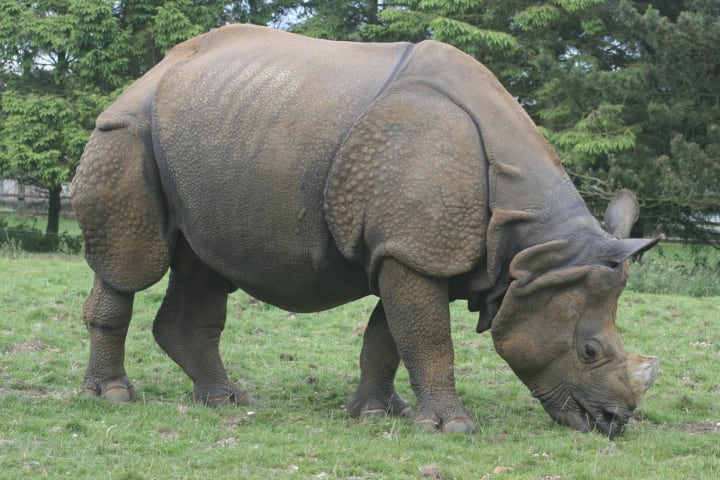
The Indian rhinoceros, also known as the greater one-horned rhinoceros, is one of the largest land animals in Asia and is native to the Indian subcontinent.
Physical Characteristics:
Indian rhinoceroses are large and bulky animals, with males weighing up to 2,700 kg (6,000 lb) and females up to 1,800 kg (4,000 lb). They have a single horn on their snout that can grow up to 25 inches long, and a gray-brown skin that is heavily folded, giving them a distinct armored appearance. They also have a distinctive hump on their shoulders, which distinguishes them from other rhino species.
Behavior:
Indian rhinoceroses are herbivores and feed on a variety of plants, including grasses, leaves, and fruits. They are primarily active during the morning and evening hours and rest during the hottest parts of the day. They are also excellent swimmers and can move through water with ease, using it to cool off during hot weather.
Conservation Status:
The Indian rhinoceros is listed as a vulnerable species by the International Union for Conservation of Nature (IUCN) due to habitat loss, poaching, and human-wildlife conflict. Their population has declined drastically in the past, but conservation efforts have led to a steady increase in their numbers in recent years.
To conserve the Indian rhinoceros, various measures have been taken, including the establishment of protected areas such as national parks and wildlife reserves, strengthening anti-poaching measures, and implementing conservation programs that involve local communities in the management of wildlife resources. In India, the majority of the world's Indian rhinoceros population is found in the Kaziranga National Park in Assam, which is a UNESCO World Heritage Site.
5., Asiatic lion:
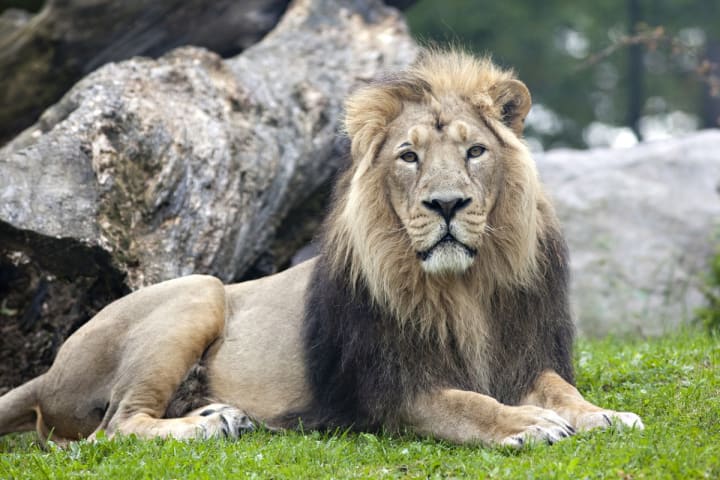
The Asiatic lion, also known as the Indian lion, is a majestic and critically endangered species of big cat that is native to the Gir Forest National Park in Gujarat, India.
Physical Characteristics:
Asiatic lions are smaller than their African counterparts, with males weighing up to 190 kg (420 lb) and females up to 130 kg (290 lb). They have a short, tawny-colored coat of fur, with a mane of longer, darker hair around the neck and shoulders of the males. The fur color ranges from light buff to a reddish-brown, with a white underbelly. They also have a long tail with a black tuft at the end.
Behavior:
Asiatic lions are social animals that live in prides consisting of 2-3 females and their cubs, as well as a dominant male. They are carnivores and primarily feed on deer, antelope, and wild boar. They hunt mainly at night and rest during the hottest parts of the day. They are also excellent swimmers and climbers and are known to climb trees to escape danger or to get a better view of their surroundings.
Conservation Status:
The Asiatic lion is listed as a critically endangered species by the International Union for Conservation of Nature (IUCN), with only around 500 individuals remaining in the wild. The main threats to their survival are habitat loss, poaching, and human-wildlife conflict.
To conserve the Asiatic lion, various measures have been taken, including the establishment of protected areas such as the Gir Forest National Park, which is the last remaining natural habitat of the species. The park is heavily guarded to prevent poaching and human-wildlife conflict, and conservation programs are in place to promote the coexistence of the lions and the local communities. The Asiatic Lion Reintroduction Project is also underway, with plans to reintroduce the species to other protected areas in India.
6., Gharial:
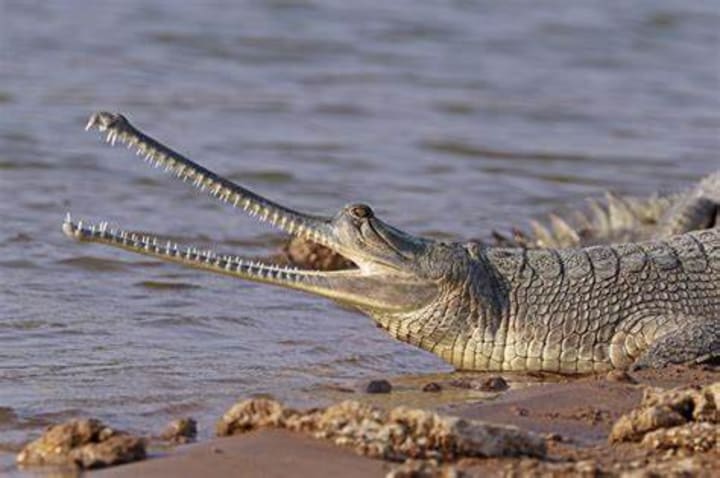
The Gharial, also known as the Indian gavial, is a critically endangered species of crocodilian native to the Indian subcontinent.
Physical Characteristics:
Gharials are easily distinguished by their long, slender snouts, which are filled with numerous interlocking teeth. They have a distinctively narrow and elongated body, which is covered in thick scales. Males can grow up to 6 meters (20 feet) in length, while females are slightly smaller, reaching up to 4.5 meters (15 feet). They have a light to dark grayish-brown skin with several rows of bony plates along their back and tail.
Behavior:
Gharials are primarily fish-eaters, and their long, slender jaws make them perfectly adapted for catching fish. They are also known to feed on crustaceans and frogs. Gharials are primarily active during the day and can often be seen basking on the riverbanks to regulate their body temperature. They are excellent swimmers, and their powerful tails enable them to move through the water with ease. Unlike other crocodilians, gharials are relatively docile and are not known to attack humans.
Conservation Status:
The Gharial is listed as a critically endangered species by the International Union for Conservation of Nature (IUCN). The primary threats to their survival are habitat loss, overfishing, and hunting. The construction of dams and barrages has also altered their natural habitats, leading to a decline in their population.
To conserve the Gharial, various measures have been taken, including the establishment of protected areas such as national parks and wildlife reserves. Gharial breeding programs have also been initiated to increase their population. Efforts have also been made to reduce human-wildlife conflict and promote sustainable fishing practices.
7., Indian wild Ass:
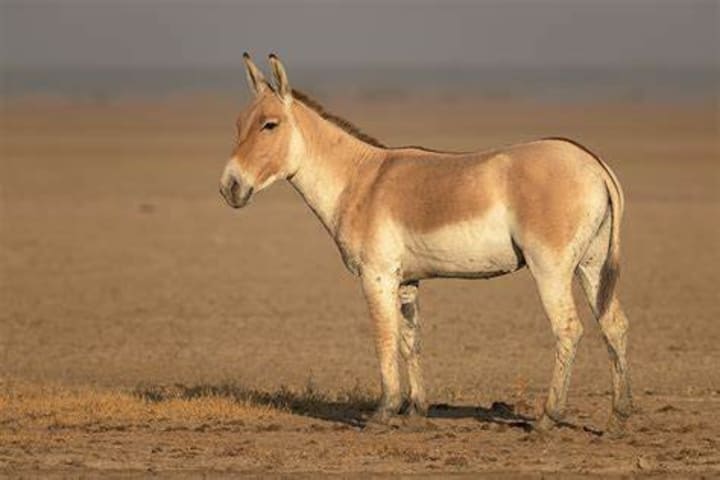
The Indian wild ass, also known as the Khur, is a critically endangered subspecies of the wild ass native to the Indian state of Gujarat.
Physical Characteristics:
The Indian wild ass is a robust and medium-sized animal, standing up to 1.4 meters (4.6 feet) at the shoulder and weighing up to 250 kg (550 lb). They have a sandy brown coat with a white underbelly, a black mane, and a short tail. They also have distinctive black stripes on their legs and a black stripe along their spine.
Behavior:
Indian wild asses are social animals that live in groups called "troops." They are primarily herbivores and feed on grasses and other vegetation. They are adapted to survive in harsh desert environments and can go without water for long periods, obtaining moisture from the plants they eat. They are also capable of running at high speeds and can reach up to 70 km/h (43 mph).
Conservation Status:
The Indian wild ass is listed as a critically endangered species by the International Union for Conservation of Nature (IUCN) due to habitat loss and fragmentation, hunting, and competition with livestock for resources. The Indian government has established the Wild Ass Sanctuary and the Little Rann of Kutch Wildlife Sanctuary to protect the species and their habitats.
Efforts are underway to conserve the Indian wild ass, including the implementation of conservation programs, habitat restoration, and anti-poaching measures. The population of the Indian wild ass has been steadily increasing, with the current population estimated to be around 6,000 individuals.
Conclusion:
The Indian wild ass is an important and unique species of Indian wildlife, and its conservation is crucial to maintain the ecological balance of India's arid grasslands. By supporting conservation efforts and raising awareness about the threats facing the Indian wild ass, we can ensure the survival of this remarkable species for future generations.
About the Creator
Enjoyed the story? Support the Creator.
Subscribe for free to receive all their stories in your feed. You could also pledge your support or give them a one-off tip, letting them know you appreciate their work.


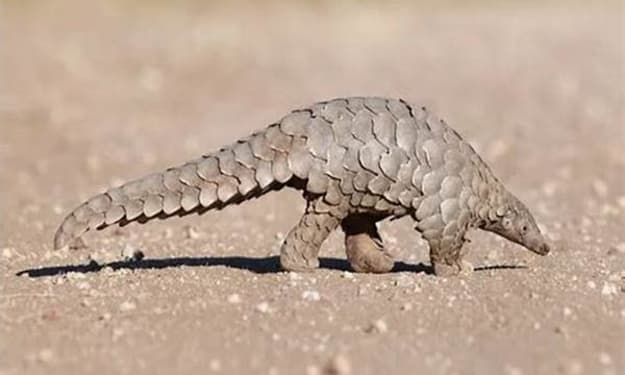



Comments
There are no comments for this story
Be the first to respond and start the conversation.